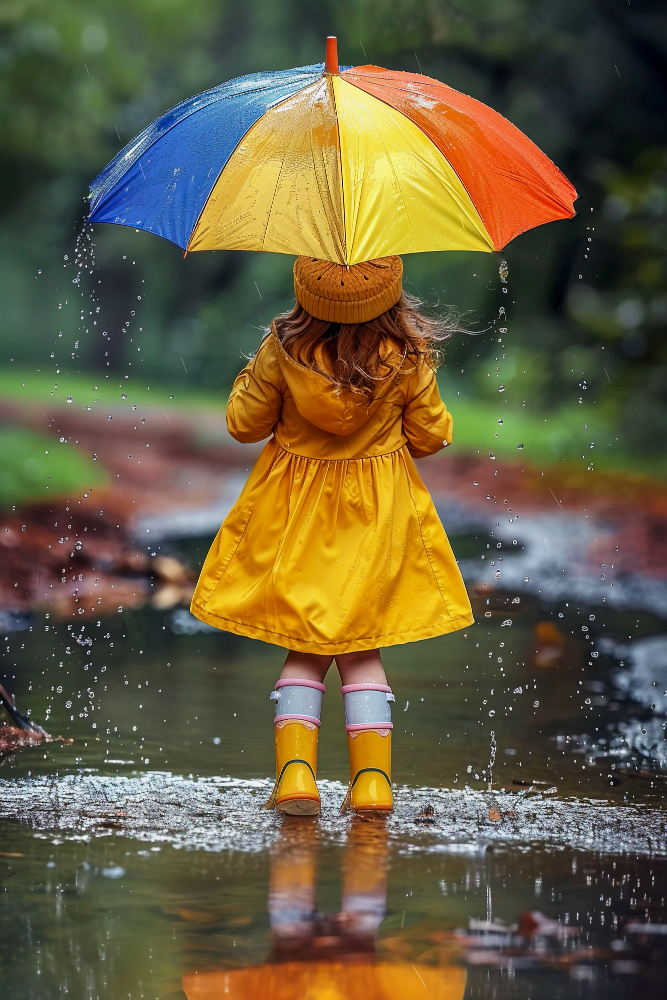Common Diseases During Monsoon that You Should Know

Monsoon is the season to enjoy the rain, eat some bhajiyas with tea and enjoy a drive to enjoy nature. But monsoon is also known as the season of flu where people often get coughs, cold and fever. The monsoon brings with it all sorts of diseases like dengue, malaria, diarrhea etc. You can get these diseases from factors like unhygienic food, contaminated water, insects and viruses.
In this blog, we will understand the diseases in the monsoon season in India. What are their symptoms and how to prevent rainy season diseases.
Why Do Diseases Spreads Faster in Monsoon in India?
During monsoon season, the air is humid, ideal for the growth of bacteria and viruses. This makes you more exposed to bacteria and viruses. The risk of infection in monsoon is two times higher than the rest of the year. The humid conditions are also ideal for insects and flies which lead to the spreading the germs and transmitting diseases.
There are three types of diseases in monsoon, waterborne, airborne and spread by insects. To avoid seasonal diseases in monsoon you must take certain precautions. Not all rainy season diseases are dangerous, but it is important to identify the symptoms early to avoid any health risks.
List of Seasonal Diseases
1. Airborne Diseases
Airborne diseases are spread through the air and can cause viral fever, common flu and cold, sore throat, cough, etc. Even though they cause mild infections in adults, people with weak immunity, children and old people are at higher risk of these infections.
2. Cough, Cold and Fever
Cough, cold and fever are the most common types of infection in monsoon especially in areas that get waterlogged which allows the bacteria to grow. Also, not maintaining proper hygiene, eating unhygienic food, not boiling water before drinking can spread these diseases faster.
Symptoms of cough, cold and flu
- Fatigue
- Nasal Congestion
- Body Pain
- Body Chills
- Inflammation of Pharynx
- Dizziness
3. Influenza
The influenza virus is responsible for causing seasonal flu. It is a little more severe than a common cold. The influenza virus is more rapidly transferred from person to person. Hence you should avoid contact with people showing influenza fever symptoms.
Symptoms of Influenza Fever
- Fever
- Sweating
- Headache
- Sore Throat
- Muscle and Joint Pain
- Dry and Persistent Cough
4. Waterborne Diseases
According to the World Health Organisation (WHO) over 3.4 million people in India are affected by waterborne diseases during monsoon. Water logging is the major reason for the spread of waterborne disease. Another main reason is water contamination which allows the spread of pathogens from water into the body. Children are most vulnerable to these diseases as they like to play on the water during monsoon (1).
5. Typhoid
Typhoid is caused by the bacteria S. Typhi. It is the most common waterborne disease in India. Typhoid affects 4.5 million people in India causing 9000 deaths annually. The best way to avoid typhoid is to drink clean water.
Symptoms of Typhoid
- Prolonged High Fever
- Weakness
- Abdominal Pain
- Vomiting
- Constipation
- Headaches
6. Cholera
Another most common waterborne disease during monsoon is cholera. Improper sanitation, dirty water and unhygienic food are the main reasons for the spread of cholera. Indian sub-continent contributes to 78% of total cholera cases globally (2). From 2010 to 2020 India has reported 565 cholera outbreaks causing 45,759 cases and 263 deaths.
Symptoms of Cholera
- Low Blood Pressure
- Thirst
- Muscle Cramps
- Rapid Heart Rate
- Dry Mucus
7. Leptospirosis
The main reason for leptospirosis is contact with mud or dirty water; especially if your open wounds or cuts come in touch with such contamination, the risks increase. If you can’t avoid going into the water or contact with water during monsoon then make sure you cover your open wounds properly. It is important to identify the symptoms early to avoid severe health issues like kidney or liver damage.
Symptoms of Leptospirosis
- High Fever
- Red Eyes
- Rashes
- Diarrhea
- Muscle Aches
8. Jaundice and Hepatitis A
Jaundice is caused by Hepatitis A due to poor sanitation, consuming contaminated water and food, and unhealthy eating habits are the primary reasons for this disease. This can lead to liver swelling. According to a survey 2.76 per 1,000 people in India are diagnosed with jaundice annually.
Symptoms of Jaundice
- Liver Dysfunction
- Yellow Urine
- Yellow Nails
- Stomach Pan
- White Stool
- Insects Borne Diseases
Monsoon season is the breeding time of lots of insects and mosquitos. These insects mostly breed on stagnant water on the roads or near your house. According to a study India alone contributes to 34% of dengue and 11% of malaria cases worldwide.
9. Malaria
Malaria is caused by Anopheles minimus genus of mosquitoes which breed more in monsoon. This is also the breeding time for malaria-causing parasite Plasmodium. Malaria is a life threatening disease if not treated early. During malaria fever can go up to as high as 105 degrees.
Symptoms of Malaria
- High Fever
- Chills
- Nausea
- Vomiting
- Abdominal Pain
10. Dengue
Dengue is caused by Aedes aegypti mosquito also known as tiger mosquito. To avoid dengue, make sure there is no stagnant water in your home. The incubation period of dengue fever is generally between 4 and 7 days after getting infected (3).
Symptoms of Dengue
- High Fever
- Rash
- Swollen Glands
- Pain Behind the Eyes
- Muscle and Joint Pain
11. Chikungunya
Chikungunya is the least dangerous insect borne disease. Another name for chikungunya is ‘bending up’ because it can cause arthritis symptoms in the infected person, especially joint pain and stiffness.
Symptoms of Chikungunya
- Back Pain
- Joint Pain
- High Fever
- Vomiting
Prevention Against Monsoon Diseases
- Prevention Against Airborne Diseases
- Cover Your Mouth while coughing
- Drink warm water
- Stay away from people who are sick
- Wash your hands and feet thoroughly after returning from outdoors
- Prevention Against Waterborne Diseases
- Drink boiled water
- Keep your food covered
- Wash fruits and vegetables thoroughly
- Ensure no water logging in and around the house
- Prevention Against Insect Borne Diseases
- Use a mosquito net
- Get rid of stagnant water
- Use insect repellent
- Keep your house clean
Conclusion
You are most vulnerable to getting sick during monsoon due to damp weather. Prevention is always better than cure. It is important to boost your immune system to stay protected against any diseases in monsoon. Vitamin C is the best nutrient to boost your immunity. Take vitamin C supplement daily to improve your immunity. Choose natural amla extract rather than synthetic ascorbic acid. Stay safe during this monsoon.
FAQs
1. What is the common disease during monsoon?
Cough and cold are the most common diseases during monsoon.
2. Why do we fall ill in monsoon?
During monsoon, the air is humid and damp, ideal for pathogens growth. Also, weather during monsoon makes our immune system weak.
3. What are the symptoms of monsoon flu?
Symptoms of monsoon flu include fever, cough, cold and body pain
4. Can monsoon make you sick?
Yes, monsoon can make you sick. It is the season in which people fall sick more often than in other seasons.





